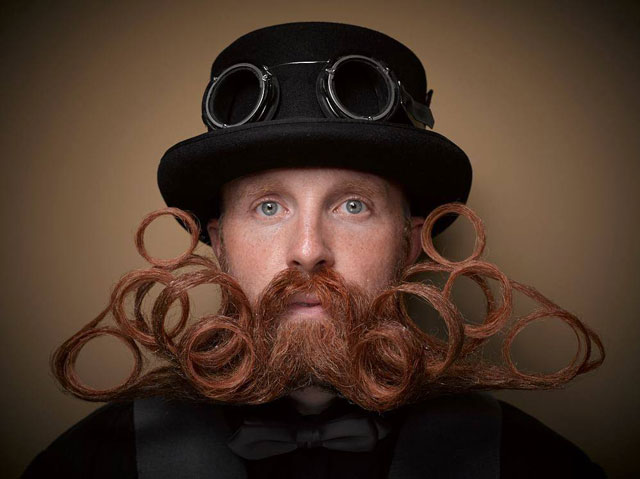 Beard bros know that the beard, as a trend comes and goes—and in recent years it’s made one heck of a comeback. But since its resurgence, there have been continual murmurings of something the so-called experts call “peak beard,” along with threatening pronouncements that it’s been “reached,” and even surpassed.
Beard bros know that the beard, as a trend comes and goes—and in recent years it’s made one heck of a comeback. But since its resurgence, there have been continual murmurings of something the so-called experts call “peak beard,” along with threatening pronouncements that it’s been “reached,” and even surpassed.
“Peak beard,” you say to yourself, “that sounds great!” (We concur, but keep reading.)
Unfortunately when these experts talk about “peak beard,” they mean “maximum beard popularity,” and according to them, once maximum popularity has been reached, it starts to decline. Think for beard popularity as a pendulum. The moment it reaches its highest point, it must start swinging back the other way.
The Myths and Realities of Peak Beard
Did you know that a beard scientist is called a pogonologist? Well, now you know. Pogonologists like Dr. Rob Brooks of New South Wales believe that beards are a type of fashion trend that depends on negative frequency. Which means what? The fewer of them there are, the more attractive everyone else finds them. Here’s our (beardedly biased) take on his analysis.
The Reality Behind Peak Beard:
When beards are in, boy are they ever in. In the early 2010s, it seemed like every man who could sprout a full face of hair did so. So in a very strict sense, surely there must be a period of “peak beard” in whenever beards are in style. But does that mean beards must inevitably go out of style once peak beard has been reached?
We say, with all due respect to the card carrying pogonologists in our reading audience, “No.”
The Myth of Peak Beard
Experts like Brooks point to the see-sawing history of men’s facial follicles as proof of the peak beard hypothesis. But if the attractiveness of both beards and bare faces are dependent upon scarcity, wouldn’t it stand to reason that the two would even out over time? That men would be constantly racing to grow (or shave) their facial hair to gain whatever social advantages were offered by bucking the trend?
Furthermore, beards are much more than a fashion trend. We might certainly have reached something like “peak bell bottoms” in the seventies—there is a point beyond which the bell should not venture, and a backlash when it does. But much like the option for women to wear pants, beards offer a plethora of non-fashion related benefits. Do we expect women (or men for that matter) to reach “peak pants” and then violently revolt against comfortable bottom pieces? Of course not.
Beards as fashion may wax and wane, certainly. But the beard lifestyle has no ultimate peak, no inherent pressure valve. That’s because beards make life better. They are a natural part of our faces—surely evolution has not built in a mechanism for demanding that we scrape sharp blades across our majestic male jaws. The very idea is ludicrous.
The Perks of the Peak Beard Theory
As a beard bro, you’ve probably already noted—and begun to enjoy—the perks of the peak beard theory, even if you’d never heard of it before now. While your fellows submit themselves to fashion slavery, scampering after razors and trying to keep up with trends, your beard has only become more rare and more glorious. Certainly, having your facial plumage stand out as a rarity can only be an advantage. Our generation’s enthusiastic adoption of the beard as a natural, attractive masculine feature isn’t going anywhere.
Whether or not you believe in ‘peak beard,’ it is a theory to be embraced; it serves you (and your beard) well.
